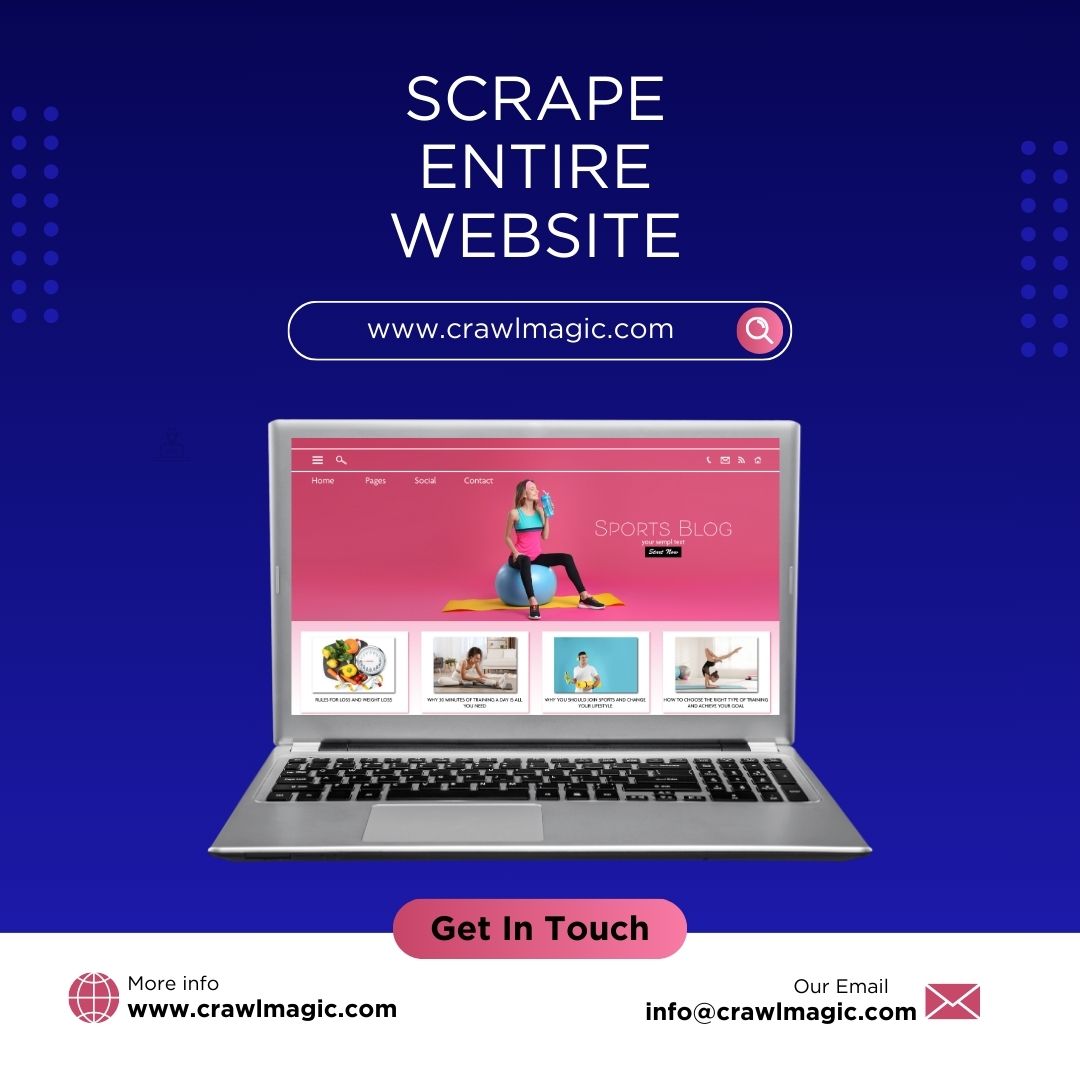Web scraping is making waves in the digital world, and for a good reason. As we increasingly rely on vast amounts of data, the need to collect and process this data efficiently becomes paramount. In this guide, we’ll break down the process of scraping an entire website, making it accessible for beginners and experts alike.
Why Scrape a Website?
Bridging the Data Gap
The internet is a treasure trove of information. From market trends to academic research, the data available can be transformative for businesses, scholars, and even hobbyists. Scraping a website allows individuals and companies to harness this information, turning raw data into actionable insights.
The Power of Automation
Imagine copying text or downloading images from a website manually. Sounds tedious, right? Web scraping automates this process, saving both time and effort.
Beginning Your Web Scraping Journey
Choosing the Right Tools
There’s no shortage of tools available for web scraping, but for those starting, simplicity is key. Python is a popular choice due to its user-friendly nature. Within Python, libraries such as Beautiful Soup and Requests have gained popularity for their effectiveness and ease of use.
Understanding the Website Structure
Every website has a unique structure, but some common elements remain consistent. Before diving into scraping, familiarize yourself with basic HTML tags like headings, paragraphs, and links. This knowledge will make the extraction process smoother.
Steps to Scrape a Website
1. Sending a Request
Every web scraping journey begins by sending a request to the website. This is like asking the website for permission to view its content. Tools like the Requests library in Python can help with this.
2. Extracting the Content
Once you’ve received the website’s content, it’s time to extract the needed data. This is where the Beautiful Soup library shines. It helps sift through the HTML content, allowing you to pull out the information you need with precision.
3. Navigating Through Pages
Websites often have multiple pages filled with valuable data. For a comprehensive scrape, you’ll need to navigate through these pages. This might involve following links or identifying URL patterns. The key is to ensure a systematic and thorough navigation process.
4. Storing the Data
After extraction, the data needs to be stored for analysis. Common storage solutions include databases, Excel sheets, or even simple text files. Choose a method that best fits the nature and volume of your data.
Respect and Responsibility in Web Scraping
Adhering to Guidelines
Websites often have a robots.txt file, which lays out rules for scraping. It’s a mark of respect and professionalism to adhere to these guidelines, ensuring you only access data that’s permitted.
Ethical Considerations
Web scraping is a powerful tool, and with power comes responsibility. Ensure you’re scraping for the right reasons. Using data to gain insights and foster growth is fantastic; just remember to always prioritize ethics.
Expanding Your Web Scraping Horizons
Engage with the Community
The web scraping community is vast and active. Engaging with fellow enthusiasts can offer fresh perspectives, solutions to challenges, and even opportunities for collaboration.
Stay Updated
The digital landscape is ever-evolving. Regularly updating your skills and tools ensures you stay ahead of the curve, making the most of the endless opportunities web scraping offers.
In a world where data is gold, web scraping is the modern-day pickaxe. With the right approach, tools, and ethics, anyone can tap into the vast resources the internet offers. So, embark on your web scraping adventure and discover the myriad possibilities that await!

